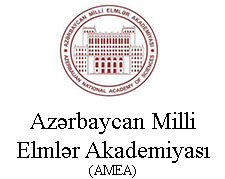Carulaspis minima is growing on the cypress damages greatly, cedar and juniper trees. The larvae and females of this pest growing on the acerose leaves and cones of the evergreen trees result in decreasing of growth of the plants, withering and drooping of the leaves, deterioration of the decorative appearance, and in the mass infection it leads to even withering. Just that’s why studying and identifying of the
Carulaspis minima and the local entomophages is of great importance.
The adult female specimens of the Carulaspis minima hibernate. The female specimens are brownish-yellow color and under the shell. In the second and third decades of April an arousal occurs in diaspididae.In this period in the bodies of the female specimens’ egg cells begin to form slowly.
In Absheron Carulaspis minima begin to lay an egg in the first and second decade of May. About 6-7 days later mass egg lying starts. The eggs are very small and yellow. The eggs are laid under the shell of the female specimen. The maximum egg number of one specimen is 40, the minimum is 25. After 5-6 days from the eggs germ “vagabond” larvae. They are of yellow flattened oval disc form, very errant. These unable larvae have got 3 pair appendages and move actively. When they find a suitable place they become motionless and begin to grow nourishing with a plant sap. These larvae lose their appendages and antennae. At first they are without shell cover. But in 2-3 days they are covered with the initial white shell. So, the larvae of the first age stage appear. In Absheron in the second decade of May you may see a lot of larvae of the first age stage covered with white shell stuck on the cones and acerose leaves of the cypress. In Absheron in the first decade of June a transition period to the second age begins. In this period the male and female specimens begin to differ from each other. The shell of the male specimens is longish, whitish. The body under the shell of the female larvae is yellow and round. The body of the malesis longish, in the further period of the growth the appendages, antennae, wings are growing. One of the main features of this period is that the bottom of the shell of the mature specimens is already empty, there are only egg shells. The diaspididae consist of the larvae particularly in the first and second age period during this period. The females are yellow. Already in the second and third decade of June the male specimens begin to fly. The males are winged, brownish yellow. It has not got a mouthpart, that’s why it lives 1-2 days. It perishes after fecundating the female specimens. The flying of the males lasts about 8-10 days. After 8-10 days the eggs begin to form in the ovary of some female specimens. At the end of the third decade of June and in the first decade of July already the first egg laying female specimens of the second generation appear. After 3-4 days unable larvae come out of the eggs and spread around leaving the shell. Finding a suitable place it loses its appendages, sticks and is covered with the first shell – whitish shell.
After 17-18 days growth the larvae of the first age period passes to the second age period, the larva shell of the second age period sticks to the first age period larva shell, as well. As it is shown above, the male and female specimens already begin to differ.
The second age period lasts about 16-18 days. In the second decade of August the fly of the males begin. After mating with the females, the embryo nate female specimens are born. So, the third generation begins. The male specimens of the third generation cover the end of September, and the beginning of October. The fly of the males in this period is of long duration, and lasts about 20 days. In connection with the chilling of the weather in winter all larva perish, only the embryonate female specimens hibernates. The embryonate female specimens are darker rather than the specimens in spring-summer months.















